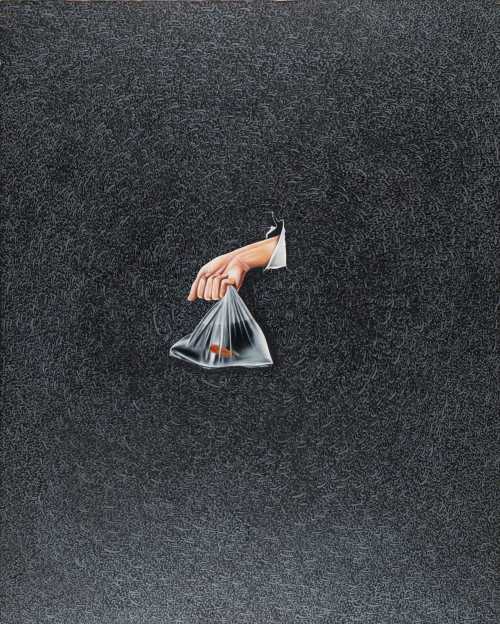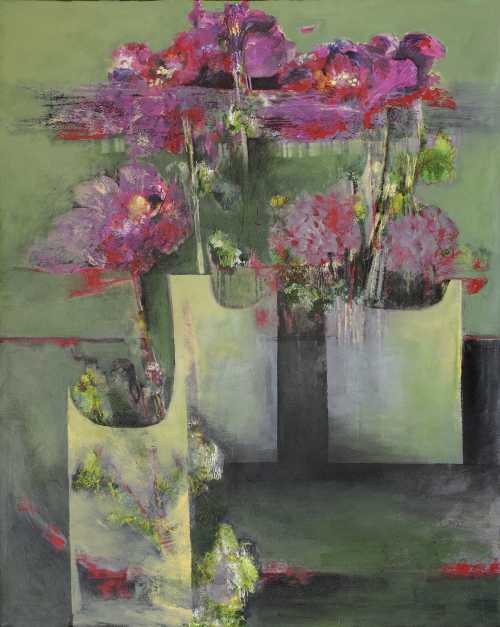- Beneath the Olive Tree 2007
- Oil on canvas
- Painting
- 70 * 100 cm
- Signed "S. Mansour" in Arabic and English, dated "07" (lower right)
Framed
Estimation
£25,000
31,356 USD
-
£50,000
62,712 USD
Unsold
Artwork Description
Bonhams is proud to present this rare painting by one of the most sought-after Palestinian artists Sliman Mansour. Mansour was born in 1947 and spent his childhood around the verdant hills and fields of Birzeit and then spent his adolescence in Bethlehem and Jerusalem. His childhood experiences left a significant mark on his work, heightening a sense of gradual loss in Palestine, notably after the occupation of the West Bank and Jerusalem in 1967. His early encounters also presented him with the symbols and images he would later use to preserve and highlight the Palestinian identity.
By using symbols derived from Palestinian life, culture, history, and tradition; Mansour uniquely illustrates Palestinians' resolve and connection with their land. His paintings epitomize art as a form of resistance. With orange trees, he represents land lost in the Nakba of 1948. With olive trees, he represents land occupied in 1967. With women wearing traditional embroidered dresses, he represents Palestinian land and the Palestinian revolution. With the landscape of Palestine and its stone terraces, he represents the mark of Palestinian farmers on the land. With images of Jerusalem, and the glistening Dome of the Rock, he represents the Palestinian homeland and the dream of return.
Mansour has showcased his artwork at exhibitions worldwide, including: the Inaugural Exhibition, Institut du Monde Arabe, Paris 1987; "Occupation and Resistance," the Other Museum, New York 1990; the Sharjah Biennial, Sharjah 1995; "Seven Palestinian Artists," Darat al Funun, Amman 1997; "Made in Palestine," the Station Museum of Contemporary Art, Houston 2003; "Art Palestine," Meem Gallery, Dubai 2011; and "Abstraction and Calligraphy — Towards a Universal Language,' Louvre Abu Dhabi in collaboration with Centre Pompidou, 2021. In 1998, Mansour received the Palestine Prize for the Visual Arts and the Grand Nile Prize At the Seventh Cairo Biennial. In 2019, he was awarded the UNESCO-Sharjah Prize for Arab Culture for his role in highlighting Palestinian and Arab cultures internationally.
By using symbols derived from Palestinian life, culture, history, and tradition; Mansour uniquely illustrates Palestinians' resolve and connection with their land. His paintings epitomize art as a form of resistance. With orange trees, he represents land lost in the Nakba of 1948. With olive trees, he represents land occupied in 1967. With women wearing traditional embroidered dresses, he represents Palestinian land and the Palestinian revolution. With the landscape of Palestine and its stone terraces, he represents the mark of Palestinian farmers on the land. With images of Jerusalem, and the glistening Dome of the Rock, he represents the Palestinian homeland and the dream of return.
Mansour has showcased his artwork at exhibitions worldwide, including: the Inaugural Exhibition, Institut du Monde Arabe, Paris 1987; "Occupation and Resistance," the Other Museum, New York 1990; the Sharjah Biennial, Sharjah 1995; "Seven Palestinian Artists," Darat al Funun, Amman 1997; "Made in Palestine," the Station Museum of Contemporary Art, Houston 2003; "Art Palestine," Meem Gallery, Dubai 2011; and "Abstraction and Calligraphy — Towards a Universal Language,' Louvre Abu Dhabi in collaboration with Centre Pompidou, 2021. In 1998, Mansour received the Palestine Prize for the Visual Arts and the Grand Nile Prize At the Seventh Cairo Biennial. In 2019, he was awarded the UNESCO-Sharjah Prize for Arab Culture for his role in highlighting Palestinian and Arab cultures internationally.
More lots by Sliman Mansour
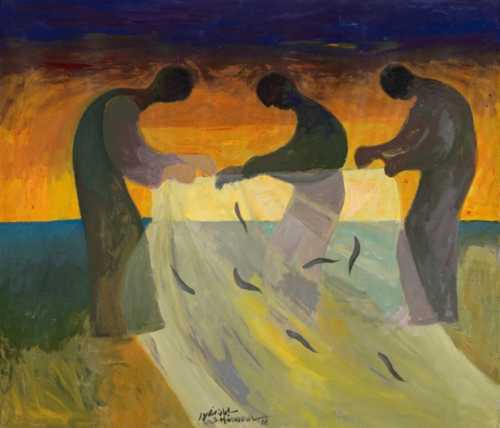
Fisher
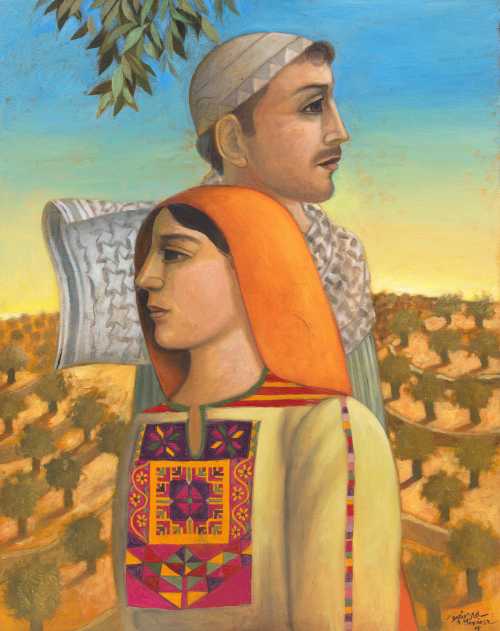
Guardians of the Land
Estimation
£40,000
53,333 USD
-
£60,000
80,000 USD
Realized Price
£51,200
68,267 USD
2.4%
Sale Date
Bonhams
-
25 November 2025
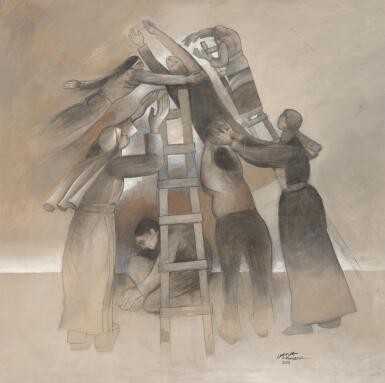
Untitled (Picking The Olive Tree That No Longer Exists)
Estimation
£18,000
24,000 USD
-
£25,000
33,333 USD
Realized Price
£53,340
71,120 USD
148.093%
Sale Date
Sotheby's
-
1 May 2025
Realized Price
126,459 USD
Min Estimate
61,892 USD
Max Estimate
88,980 USD
Average Artwork Worth
+63.643%
Average Growth of Artwork Worth
Sales Performance Against Estimates
Average & Median Sold Lot Value
2021 - 2025
Performance vs. Estimate
2021 - 2025
Sell-through Rate
2021 - 2025
Similar Artworks

Prey
Estimation
$1,800
-
$2,500
Sale Date
Artsy Auction
-
2 May 2025

